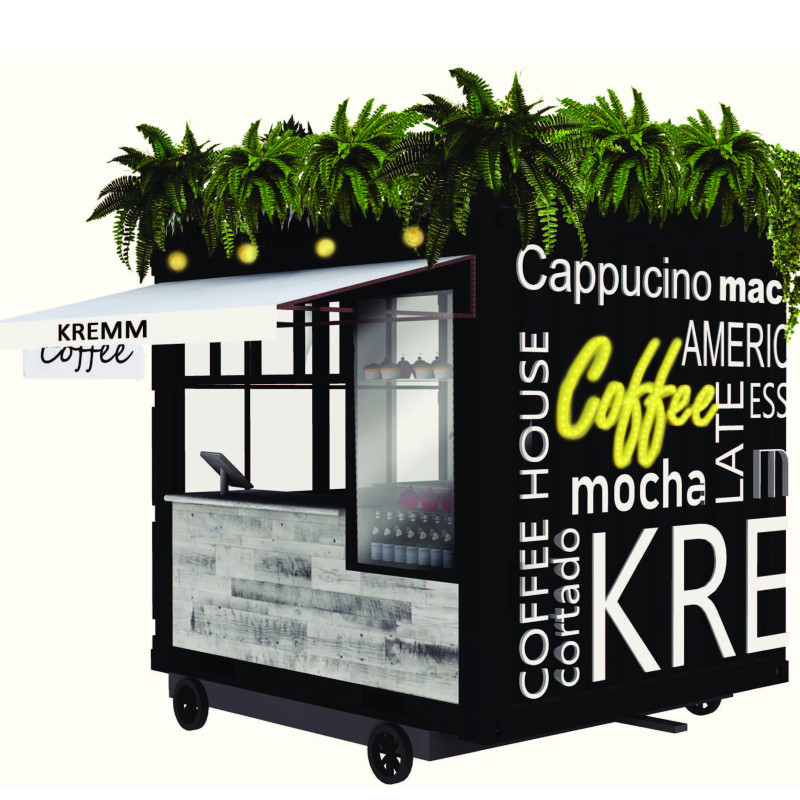5 key facts about this project
The Big Tiny House Challenge presents a mobile coffee house design that addresses the rising need for efficient, adaptable spaces in urban settings. Utilizing a shipping container as the primary structure, this project emphasizes a compact and functional layout that can be located in various areas. The design merges industrial elements with inviting interiors, creating a pleasant environment for customers who seek quality coffee on the go.
Structure and Layout
The foundation of the coffee house is a shipping container, chosen for its strength and durability. This decision simplifies assembly and reduces maintenance over time. Inside, the layout is carefully arranged to enhance workflow, allowing for efficient coffee preparation. The setup facilitates quick service while ensuring that the space remains accessible for both staff and customers. Attention to detail in the layout contributes to a satisfying overall experience.
Materials
Material choices are important in shaping the character and usability of the coffee house. Reclaimed wood is featured prominently, bringing warmth and a sense of sustainability. Calacatta marble is used for select surfaces, offering a polished look. The design includes a palette of cool gray tones, clear glass for natural light, and subway white wall tiles that provide a classic appearance. Bronze finishes add a hint of elegance, all while ensuring the space is durable enough to withstand heavy usage.
Sustainability
Renewable energy solutions are an essential aspect of the coffee house. Solar panels are integrated into the design, reflecting a commitment to environmental care. This feature helps minimize operational costs and aligns with modern practices in sustainable design. Additionally, the use of natural light enhances the interior ambiance, making the coffee house feel welcoming and vibrant during daylight hours.
A key detail is the graphics displayed on the sides and back of the unit. These graphics create a distinct visual identity that connects the coffee house to its urban context. This approach not only invites curiosity but also reinforces the unique presence of the establishment in the cityscape.


























